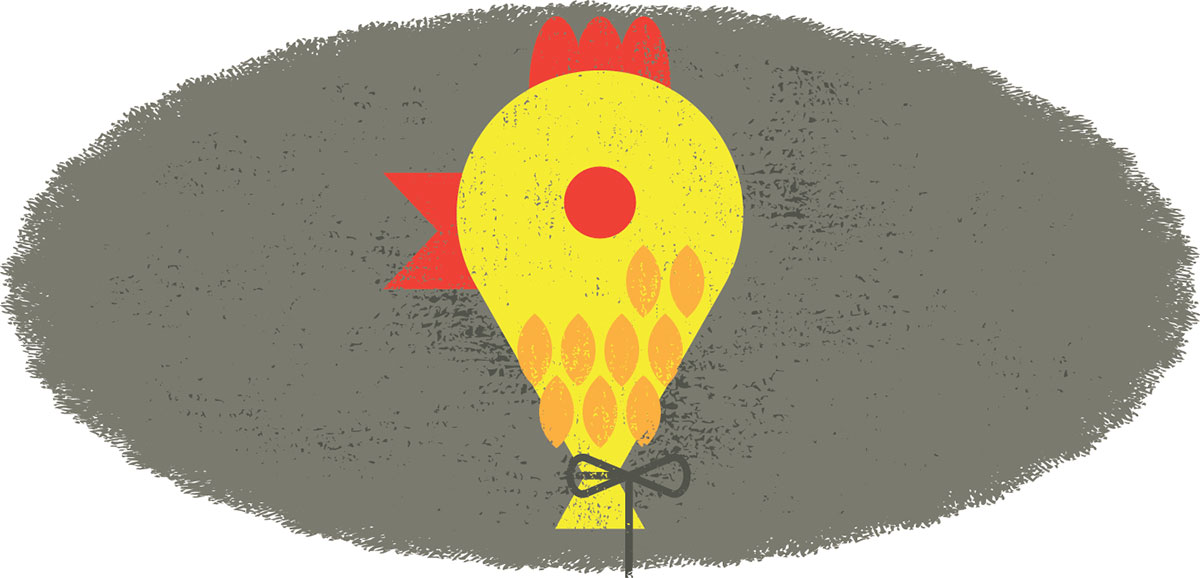
Fright this way.
The Grim Reaper looms over everything, in one arm a scythe, in the other a sign: fright this way.
The reaper’s an inflatable. He’s surrounded by inflatables: vampires, zombies, and psychopathic clowns.
There’s an inflatable skeleton. There’s an inflatable skeleton in an inflatable coffin. An inflatable tombstone bears the inscription: here lies willie b. back. For francophones, there’s another inscription on the other side: ci-gît g. rendulam.
Happy Halloween! It’s the season when stores are stocked with decorations of the dead and dying. It’s the season when stores are stocked with inflatables of the dead and the dying.
They could sell an inflatable of me:
I’m dying.
Insufflation.
It’s medical. It’s the act of blowing a substance—powder, air, medicine—into the orifice of a body.
I’ve had it done to me many times—doctors puff air up my ass so that my rectum and intestine puff out, then they look for cancer.
That is, they look for more cancer.
It’s a painful process, but pleasurable, too—while I’m inflated, I like to think I’ve become something besides myself—an inflatable.
I have not seen myself being insufflated—my head’s always down, my ass up. I’m told that it can be done manually—a doctor pumps air into my rectum with a bladder. What goes in is room air; what comes out is something else. I’m told that it can be done automatically—an insufflating contraption pumps C02 into my ass. What inflatables have is similar—an electric fan puffs them up from the inside as soon as it’s plugged in. When I’m puffed up, I could rupture. When they’re puffed up, they could rupture—they are, after all, balloons.
At Halloween, balloons are the ideal decor—they’re so good at death.
“The Importance of Hallowe’en Trade”—this was a headline in a stationery trade magazine, in 1916. “Masks, lanterns, favors, and placecards, besides post cards and other novelties, can all be sold most readily for Hallowe’en.”
Balloons were novelties.
Halloween balloons were much the same then as now—black and orange, stamped with skulls and skeletons. The rubber was heavier. The dye on the rubber rubbed off. They had trumpet ends: when air went out, they wailed.
fun for all, read a headline in the same trade magazine in 1922. The big seller was the Broadway Chicken—a balloon in a costume.
The chicken was a balloon with a cardboard beak and feathers glued to it. When it deflated, it squawked. Another company offered the Dying Pig, a balloon with ears and legs stuck to it. It screamed like a slaughterhouse as air shot out its asshole.
All assholes are trumpet ends.
In 1945, a jack-o’-lantern floated down Columbus Avenue.
It was a balloon in Macy’s Thanksgiving Day Parade, in New York City. Why put a jack-o’-lantern in a Thanksgiving parade?
Why not?
The first Macy’s parade took place in 1924. The floats were trucks decorated with crêpe paper and costumed characters.
Then, in 1927, it got balloons. They were floats that floated. They were storeys high—they peered into fortieth-floor apartments.
Tony Sarg, a puppeteer, designed them. That first year he did a Felix the Cat, a baby dragon, and a floppy-eared elephant. A team of the store’s employees held them aloft with poles. The balloons were rubberized silk pumped up with oxygen. The following year, Sarg pumped helium into them. At the end of the parade, the employees let them soar up into the sky. There they expanded, then exploded.
Felix’s skin fell onto the street. An ear, an eye, an asshole.
In 1929, Sarg built the balloons with slow-release valves—when the balloons were let go, they propelled themselves across the city. The balloons alit in the Bronx, in Brooklyn. They didn’t make it to Toronto, though Toronto had balloons of its own. The Santa Claus Parade tried them out in the nineteen-thirties. The streets here destroyed them—they got snagged on railway bridges and electrocuted on streetcar cables.
Balloons are born to die.
How do inflatables die? There are storms—winds whip them away. There’s vandalism—shootings, stabbings, slashings. A penknife can waste a werewolf. A garden stake can take down a vampire. Then there’s simple wear and tear. Air fans fail. Seams pull apart. Sunlight fades the fabric ’til it’s brittle. You can’t put a vampire in the sun for too long—he’ll bleed out, bow down, then drop to the ground. Then he’s nothing. He’s a tree skirt.
When I die, I like to think it’ll be with a bang—a desufflation of gas, shit, lube, like a balloon that’s been butt-fucked or a butt that’s been balloon-fucked—the dying pig as dying fag.